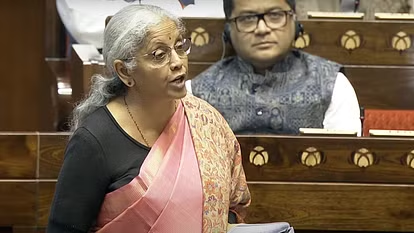Budget: How much income tax changed since 1947?

New Delhi| The first budget of independent India was presented on 16 November 1947. It was introduced by the country’s first Finance Minister RK Shanmukham Chetty. However, in a way, this was a review report of the Indian economy. In the subsequent budget, details of income and expenditure started being given by the Central Government. A part of the government’s income comes from income tax. The people of the country have to pay this tax to the government from their earnings. At the time of independence, only income up to Rs 1500 was tax free in the country. After that many changes were made in the income tax system from time to time. There was a time in the country when how much tax a person would have to pay was decided on the basis of the number of children. The history of income tax in the country has also been interesting in many other ways.
Income up to 7 lakh 75 thousand tax free for employed people
After the announcements made by the Finance Minister in the Union Budget 2024-25, if the annual income of an employed taxpayer is up to Rs 7 lakh 75 thousand, he does not have to pay income tax. Because after Standard Deduction subtracts Rs 75,000, his income comes down to Rs 7 lakh. In such a situation, he does not have to pay any tax, because under the new tax regime, the government has made income up to Rs 7 lakh tax free. This means if a person’s monthly salary is around Rs 64000 or Rs 64500 then he does not need to pay any income tax in the new tax system.
There is a demand from the Finance Minister in Budget 2025 to make income up to Rs 10 lakh tax free
In the Union Budget 2025, experts have appealed to the Finance Minister to keep income up to Rs 10 lakh away from the tax net. In the 2023-24 budget speech, Finance Minister Nirmala Sitharaman had announced to increase the income tax coverage for individual taxpayers. The income tax bracket was increased from Rs 5 lakh to Rs 7 lakh (under the new tax regime). During this time the Super Rich tax was also reduced to 37 percent. At the same time, the facility of live encashment for retired personnel was increased from Rs 3 lakh to Rs 25 lakh.
Defaulted to new tax regime in financial year 2023-24
Last year the new tax regime has been defaulted. The new tax system was implemented by the Central Government from April 1, 2020. In the new tax system i.e. new tax regime, new tax slabs were made but all deductions and exemptions available in income tax were abolished. Since independence in India, different governments have made many changes in the matter of income tax. These changes have had a direct impact on the common man, because income tax is the amount that a person has to save from his hard-earned money and pay to the government.
When the country became independent, income up to Rs 1500 was tax free
The first budget of independent India was presented on 16 November 1947. It was introduced by the country’s first Finance Minister RK Shanmukham Chetty. However, in a way, this was a review report of the Indian economy. Income up to Rs 1500 was tax free in the country when the country’s first budget was presented. In the budget presented by the Modi government in 2023, this limit was increased to Rs 7 lakh (under the new tax regime).

There was a provision of separate tax for married and unmarried people
In 1955, to increase the population, separate tax free income was kept for married and unmarried people in the country for the first time. Under this, married people did not have to pay any tax up to an income of up to Rs 2000. At the same time, this limit for bachelors was only Rs 1000.
India became the first country to give tax exemption on increasing population
India became the only country in the world to grant income tax exemption based on the number of children in 1958. Income up to Rs 3000 did not have to be taxed if there was no child when married. But, income of Rs 3300 was tax free for persons with one child and Rs 3600 on 2 children.
At one time, Rs 97.75 tax was levied on earnings of Rs 100
India had the highest rate of income tax in 1973-74. At that time, the maximum rate of income tax collection was reduced to 85 per cent. Including surcharge, this rate used to reach 97.75 per cent. After an income of Rs 2 lakh, only Rs 2.25 out of every Rs 100 earned went into the breadwinner’s pocket. The government used to keep the remaining Rs 97.75. However, in later times various governments took big steps to reduce the income tax burden on the people. At present two tax regimes of income tax are in force in the country. In which under the new tax regime, the income of about Rs 7 lakh 75 thousand for employed people is out of the tax net.








